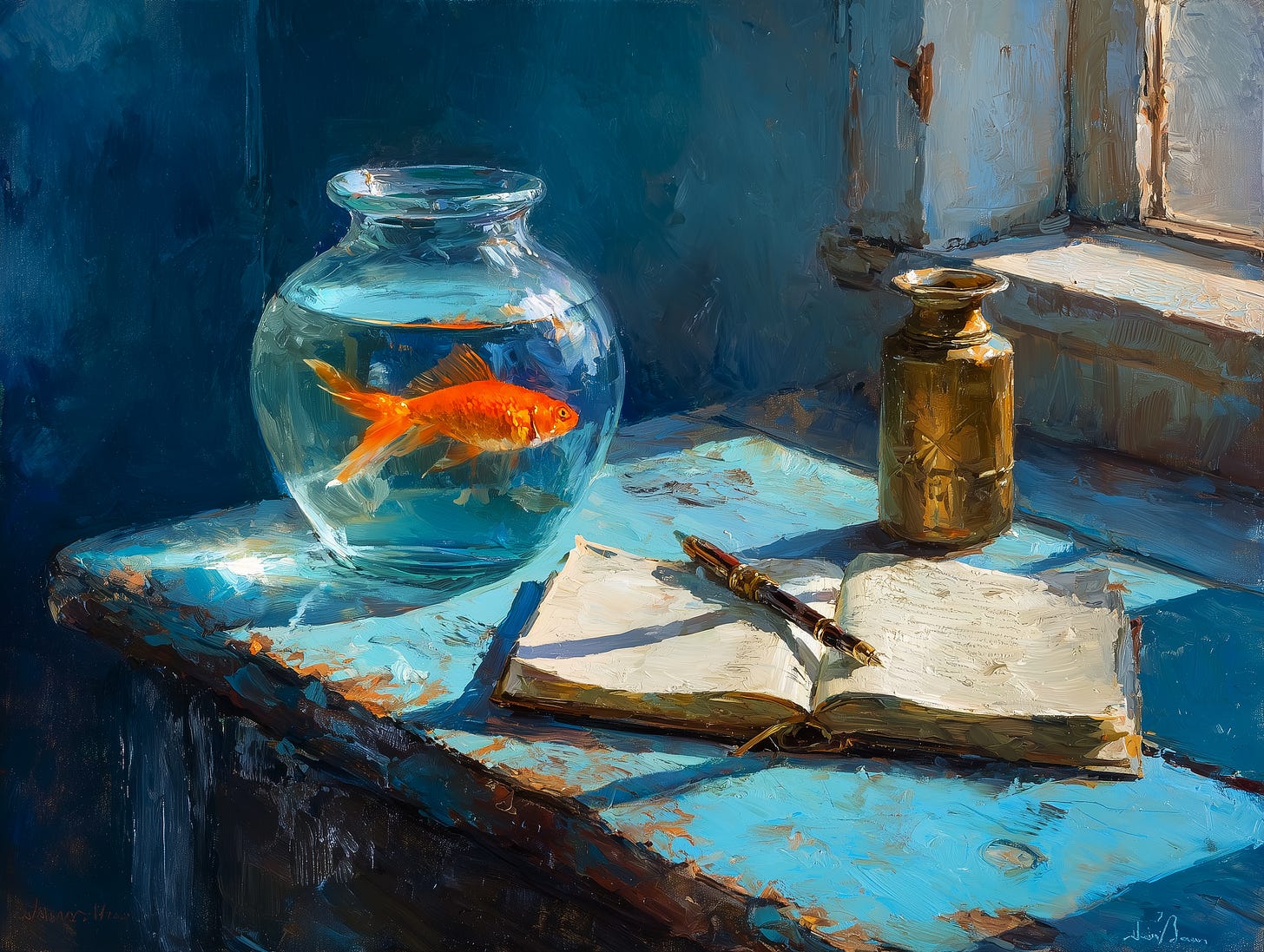This is part 2 of a series on notebook sizes and writing. Read Part 1: The Goldilocks Principle first.
In the first installment of this series exploring the various dimensions of notebooks, I pointed out how each size of notebook suits different kinds of writing. Whether you’re jotting down grocery lists, scribbling song lyrics, or drafting novels, there is a notebook that suits each of those kinds of writing—even if there isn’t a notebook that will suit all of them.
Like a key seeking its lock, some notebooks are a perfect fit. Like Goldilocks seeking the perfect bed, some notebooks are too big, some are too small, and some are just right. There’s nothing quite as satisfying as finding the right notebook, whose width holds the right number of words or phrases and whose height holds the right number of sentences or paragraphs, for whatever kind of writing you’re doing.
But we can also flip the relationship between container and content on its head. Our writing is not just a fixed thing fitting only one kind of notebook; writing is also a fluid creature that expands or contracts based on its environment. In other words, our writing is both a Goldilocks and a Goldfish.
The Goldfish Principle
Just like a Goldfish in its bowl, our writing can grow or shrink according to the size of its notebook. The same idea can be expressed both on a sheet of printer paper and on the back of an index card—albeit not in the same way. Each size brings out different dimensions of that idea.
Maybe this flexibility has made finding the right notebook difficult for you. Whether you’ve tried larger or smaller notebooks, your writing benefited from using both. In this case, you’ve already experienced the goldfish adjusting to the size of its container.
For example, I’ve often sat down to journal with a B5 notebook—with nothing particular in mind. After a few lines, I’m hooked by an idea and I end up filling the whole expanse of the page, simply because that idea had space to unfold itself.
Conversely, whenever a draft has grown unwieldy and tangled, I often take a pocket notebook on a walk and force myself to distill the mess into a few essential lines. On a page that size, there’s no extra space I feel the need to fill—there’s barely enough room to say the thing I think I need to say.
So this principle works in two directions: Give us more space, and we discover we had more to say. Give us less, and we get to the point.
Navigating Between Downsides
The Goldfish Principle solves a problem the Goldilocks Principle creates: thinking there’s only one format for your writing.
The pocket notebook devotee amasses hundreds of scattered fragments—brilliant observations, witty insights, grocery lists—but never develops any of them beyond a few lines. Capturing an idea and doing something with it are very different modes.
Meanwhile, the large-format writer falls into the opposite trap. I have mountains of morning pages that say nothing substantial. Rather than expressing ideas, I was merely filling my three page quota for the day, so I could tell myself I was “doing the artist’s way” that day. Procrastination masquerading as industriousness.
The solution isn’t to abandon either format, but to move between them strategically. Each size has its virtues and vices—the key is not getting trapped in either.
Here’s my prescription:
Start out with an A5 notebook as your Goldilocks size—for any writing
Use a A6 pocket notebook for capturing and distilling ideas (⨁)
Replace your A5 for a slightly larger B5 for expanding ideas a bit more (≈)
Cycle between those two for now on: Capture good ideas in the A6, develop them in the B5, distill them in the A6, repeat.
If you get stuck, return to an A5 and start over.
Let me know in the comments below how you switch between different sizes of notebooks.
The Digital Dilemma
Sadly, whenever I open my laptop to write for you, Gentle Reader, all these careful calibrations collapse. Enter the modern writer’s dilemma: the Internet’s complete lack of constraint.
Keep reading with a 7-day free trial
Subscribe to Armchair Notes to keep reading this post and get 7 days of free access to the full post archives.


